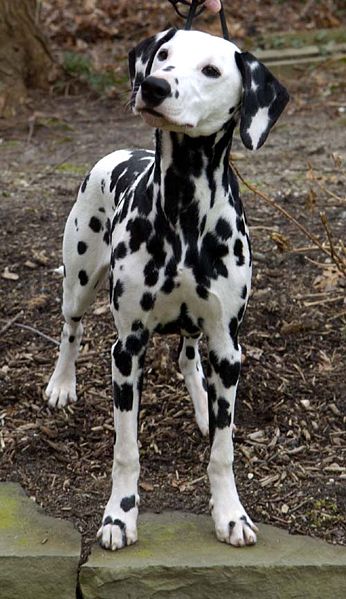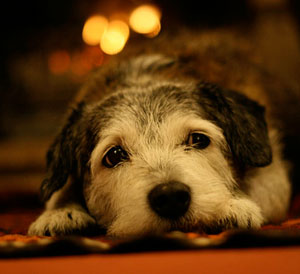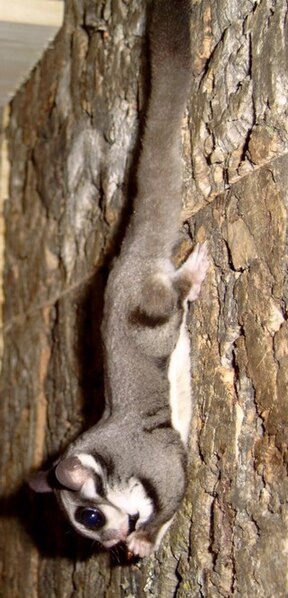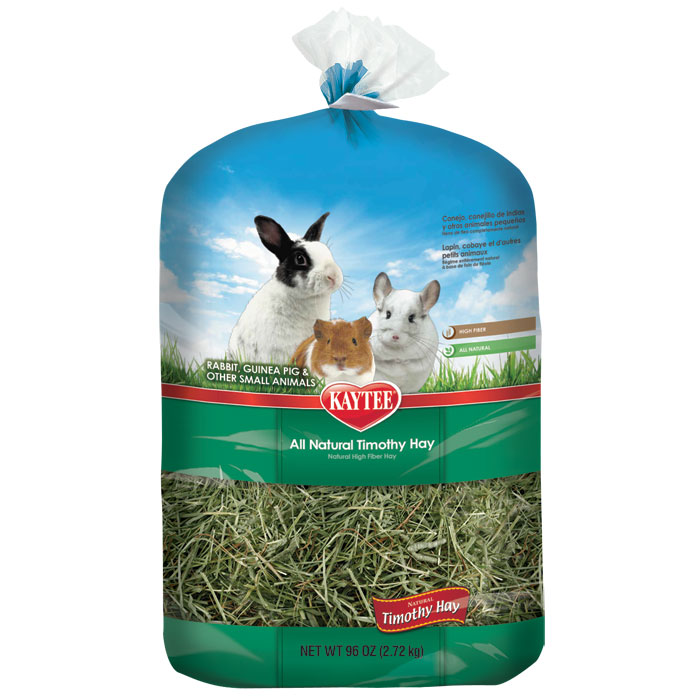 When thinking of house pets, pigs may not immediately come to mind. Most often we associate pigs with kid’s movies, farms, mud, and…bacon. However a few species of domesticated pig have grown in popularity considerably since the 1980’s, when people began to keep for a new kind of house pet. A pet that would be intelligent, affectionate, easy to train, and above all, clean. The new trend would turn heads…Potbelly Pigs! A few weeks ago I saw one of these little critters first hand, on the end of a harness, proudly strutting down the dog toy aisle with his short tail a-waggin’, and I had to stop and gawk. I will admit pigs have always intimidated me because of their large size and loud vocalizations, but after getting to know a few pigs first hand and doing a little reading, I must admit the thought of having one is pretty appealing. Let me share with you a little about the care of the most popular type of pig, the Pot-belly. Read More »
When thinking of house pets, pigs may not immediately come to mind. Most often we associate pigs with kid’s movies, farms, mud, and…bacon. However a few species of domesticated pig have grown in popularity considerably since the 1980’s, when people began to keep for a new kind of house pet. A pet that would be intelligent, affectionate, easy to train, and above all, clean. The new trend would turn heads…Potbelly Pigs! A few weeks ago I saw one of these little critters first hand, on the end of a harness, proudly strutting down the dog toy aisle with his short tail a-waggin’, and I had to stop and gawk. I will admit pigs have always intimidated me because of their large size and loud vocalizations, but after getting to know a few pigs first hand and doing a little reading, I must admit the thought of having one is pretty appealing. Let me share with you a little about the care of the most popular type of pig, the Pot-belly. Read More »
Category Archives: Pet Behavior
Feed SubscriptionPets and Disney – How Animated Movies Effect the Pet Trade
 Like most people of my generation, I was raised on Disney. The characters, theme parks and merchandise were and are still part of my life. I’ve probably seen every one of their animated films at least twice. You could even go so far as to call us Disney nuts! When I come to work each day, I am reminded of how Disney has and continues to influence generations of children, their parents and grandparents, especially with some of the more recent movies. Animals have always been the main or supporting characters in Disney animation. These endearing characters tend to sway families towards new pets. You can bet that if an animal was recently featured in a popular kid’s movie, those animals are sure to be in high demand in the pet trade. While they fuel interest in the animals and bring revenue to the industry, the films can be detrimental to the well being of the animals. It is important to remember that the fun and cuddly critters on the big screen may not necessarily be true representatives of the animals they represent. Read More »
Like most people of my generation, I was raised on Disney. The characters, theme parks and merchandise were and are still part of my life. I’ve probably seen every one of their animated films at least twice. You could even go so far as to call us Disney nuts! When I come to work each day, I am reminded of how Disney has and continues to influence generations of children, their parents and grandparents, especially with some of the more recent movies. Animals have always been the main or supporting characters in Disney animation. These endearing characters tend to sway families towards new pets. You can bet that if an animal was recently featured in a popular kid’s movie, those animals are sure to be in high demand in the pet trade. While they fuel interest in the animals and bring revenue to the industry, the films can be detrimental to the well being of the animals. It is important to remember that the fun and cuddly critters on the big screen may not necessarily be true representatives of the animals they represent. Read More »
Common Small Animal Myths – Debunking Bad Publicity – Part 1
Having worked at That Fish Place’s Small Animal Room for nearly 6 years, I’ve heard many a misconception from customers. Most of this I attribute to the grape vine effect. One person has a bad experience with a pet, tells someone else about it, and then that story gets embellished or added upon over time, until it becomes a completely fictional story. Today, I’d like to debunk some of the more commonly heard myths I’ve heard over the years. Read More »
Pet Fire Safety Check – How Does Your Home Compare?
 Last Thursday was National Pet Fire Safety Day. A house fire has always been one of my greatest fears so when the AKC put out their tips on avoiding this potential tragedy I was shocked to learn that almost 1,000 house fires last year were actually started by the family pets themselves. Some of the pet fire safety tips the AKC gave were obvious to me, but others were more subtle. Planning for the unexpected tragedy is an integral part of responsible pet ownership.
Last Thursday was National Pet Fire Safety Day. A house fire has always been one of my greatest fears so when the AKC put out their tips on avoiding this potential tragedy I was shocked to learn that almost 1,000 house fires last year were actually started by the family pets themselves. Some of the pet fire safety tips the AKC gave were obvious to me, but others were more subtle. Planning for the unexpected tragedy is an integral part of responsible pet ownership.
How to prevent your pet from starting fires
Extinguish open flames – Curious by nature, pets will often investigate candles or stovetops. Never leave an open flame, such as a candle or gas stove, unattended and be sure to double check that all flames have been put out before leaving your home. Read More »
Cool Treats for Hot Dogs – Tasty and Creative Frozen Snacks to Beat Summer Heat
It’s the middle of July, and as we brace ourselves for the next heat wave, I’m thinking of ways to keep my pup cool, too. The evening news features footage of zookeepers serving frozen treats to captive animals – from frozen bananas and fruit juice to whole frozen fish and bloodcicles (awesome if you’re a tiger, I suppose) none of the animals deny a frozen treat for a few minutes of relief from these oppressive temperatures. So, what can we offer our pets at home? There are plenty of options. Read More »
Exotic Pet Possibilities, Part 2 – Sugar Gliders, Degus, Hedgehogs and Spiny Mice
 Pygmy Mice, Ground Squirrels, Civets – all sorts of interesting small mammals have found their way into the pet trade and are regularly being bred. Please see Part I of this article for a look at my favorite, the Flying Squirrel. Today I’d like to introduce several others that I’ve enjoyed keeping and learning about.
Pygmy Mice, Ground Squirrels, Civets – all sorts of interesting small mammals have found their way into the pet trade and are regularly being bred. Please see Part I of this article for a look at my favorite, the Flying Squirrel. Today I’d like to introduce several others that I’ve enjoyed keeping and learning about.
Note:Please see Part I of this article for health-related and legal considerations. Read More »
Bird Toys – Not Just for the Birds!
I’ve owned my female gray cockatiel, Charlie, for 13 years, and still I haven’t developed the knack for figuring out what toys she will love and hate. She is a very picky girl and can take weeks to even glance at any new toy I give her, let alone play with it. Needless to say, this has resulted in a lot of perfectly good bird toys being stowed away in the cabinet never to be enjoyed. I thought I was wasting a lot of money on things that Charlie didn’t even like, and decided to experiment. Read More »
July 4th Fun & Fireworks – Pet Anxiety & Safety Tips
The July 4th Holiday is upon us, and unfortunately it is one of the busiest times for animal shelters due to the overwhelming amount of dogs lost during the fireworks & festivities. The fireworks may be fun for us, for some of our canine friends it can be downright terrifying.
During fireworks displays, or even while setting off fireworks in your backyard and neighborhood, your usually calm family pet may become extremely stressed. The stress overload can cause some pets to try to escape the house or yard. By following a few simple tips for this holiday weekend you can avoid coming home to an empty house and the anxiety of a missing beloved family pet.
- Avoid bringing your pet to fireworks displays, even if they are not usually startled by loud noises or thunder.
- Keep your pet indoors in a quiet, safe, sheltered area. Keep doors and windows closed and locked (I’ve heard stories of dogs opening slider doors or even jumping through windows to escape). Leave the TV on or play soothing music at a normal level to distract him from the noise outside
- Prepare a safe “den” for your pet. If they choose to hide under the bed, in their crate or somewhere else in the house, allow them to. If your dog is not crate trained, and you would like him to be please visit our comprehensive crate training guide.
- Feed your pet before the displays begin and keep a special chew treat on hand as a distraction.
- Nervous or stressed dogs may chew to ease anxiety. Make sure to provide proper chew toys and make sure all cords and other dangerous objects are out of reach
- Try a calming aid to help calm anxiety, or ask your vet for medication to help with your pet’s noise phobia.
- Do not leave your pet outside during the festivities. Even with a fence or a tie-out a dog can go to great lengths to escape the source of their anxiety.
- Always make sure your pet is wearing a properly fitted dog collar with up-to-date ID tags. Consider having your pet microchipped for extra security.
- Try not to reward anxiety with extra attention. It may be hard not to cuddle or fawn over your pet when he is scared, but do your best to ignore axious behavior or practice distraction techniques to turn their focus away from commotions.
Follow these simple steps to enjoy a worry free Independence Day. The knowledge that your family pets are safe and sound will make your holiday all the more fun. Have a great holiday weekend!
Severe Weather can also be very stressful on our pets. Check out this post for tips on keeping you pets calm during severe weather.
Ten Tips to Discourage Destructive Behavior in Dogs
 For those of you following this blog, you may have read some of my previous posts about Gatsby, my incredibly destructive, adopted German Shepherd mix. I’d like to share some of the techniques I used to help curb Gatsby’s destructive tendencies.
For those of you following this blog, you may have read some of my previous posts about Gatsby, my incredibly destructive, adopted German Shepherd mix. I’d like to share some of the techniques I used to help curb Gatsby’s destructive tendencies.
If you have a destructive pet, the first thing you have to do is find the root of the behavior. Does he have separation anxiety? Is he under-stimulated? Or maybe there was a recent change in routine or environment? All of these can be common triggers of destructive dog behavior. Your ‘treatment’ of the bad behavior will depend on the cause, and you may require some professional help if you are dealing with dangerous or extreme destruction in your home.
Read More »
Balanced Diet – Feeding Guinea Pigs and Rabbits
As popular as these pets are, understanding the proper diet of our guinea pigs and rabbits is often cause for confusion, especially in first time owners. I thought it would be beneficial to compose a break down of the foods required of guinea pigs and rabbits for the overall health of these fuzzy little eating machines!
 Hays and Grasses
Hays and Grasses
Pellets used to be the main (if not the only) food offered to guinea pigs and rabbits. Studies have shown however, that feeding only pellets can affect the health of the animal. Rabbits and guinea pigs are grazing animals that spend a lot of their day eating. So why aren’t they all round as watermelons? The grasses and shrubs that these animals feed on in the wild are very low in nutrition, so they must eat a lot of them to obtain the amount of nutrients needed each day. Since this grazing behavior is instinctive, our furry friends from the pet store continue to eat all day long just like their wild cousins, except captive animals are eating nutrient-concentrated pellets that can cause obesity if consumed in large amounts. This is why the main diet of any guinea pig or rabbit should be hay, primarily Timothy Hay, which is closest to what they would be feeding on in the wild. Large handfuls of hay every day will help keep your pet in grazing mode which will aid in alleviating boredom, wearing down teeth, and keeping the weight off. You can also occasionally offer Brome, Orchard Grass, Meadow Mix, and Alfalfa to mix things up. Fresh grasses from the yard are also OK (in small amounts) as long as the grass is collected from an area free of pesticides, runoff and pet waste. Be sure the picked grasses do not contain wild mushrooms or berries, and rinse it thoroughly before giving to your pets. Read More »
 That Pet Blog That Pet Place Pet Blog
That Pet Blog That Pet Place Pet Blog

